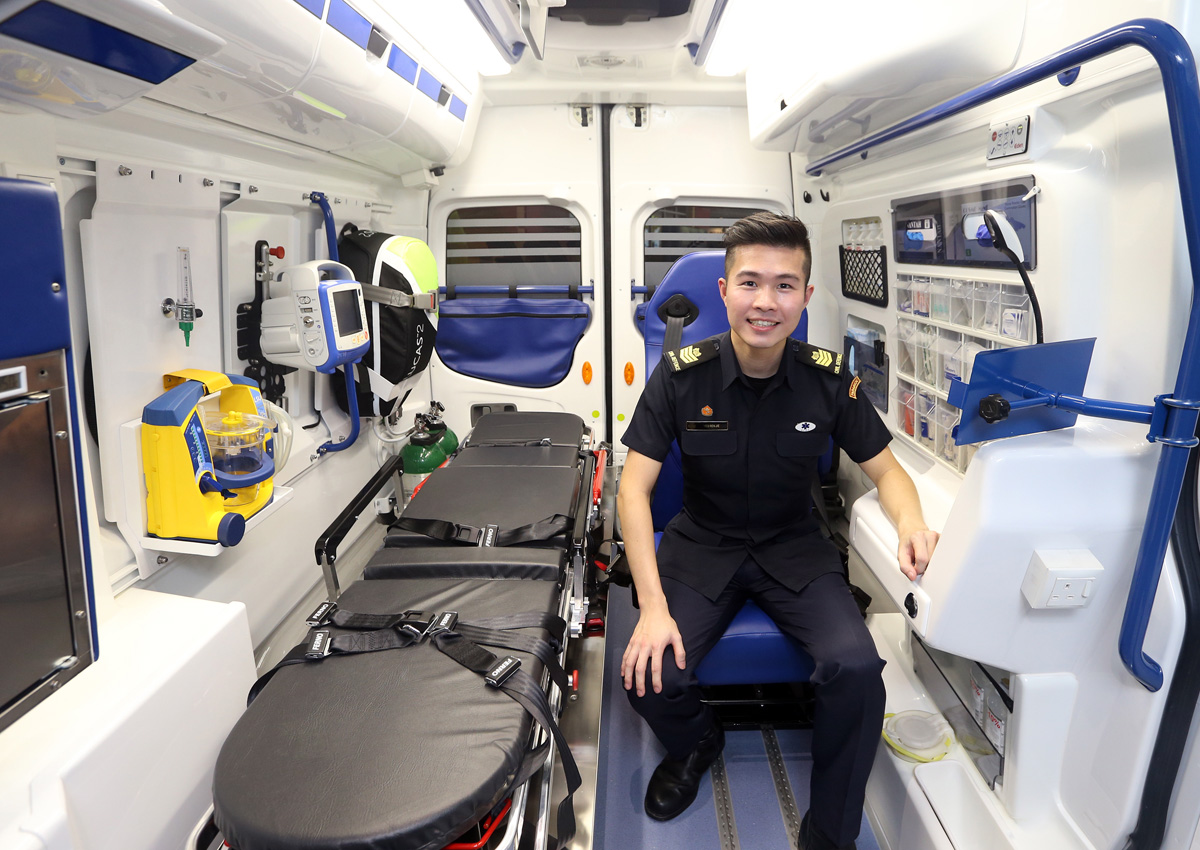SCDF re-gears community programmes so people are better prepared to react to terrorist threats
Community programmes that once trained volunteers in lifesaving skills will be re-geared to focus on terrorist threats so that Singaporeans can better look out for one another.
These programmes will train individuals as “Community First Responders” who can react to emergencies before police and civil defence forces arrive. The hope is to have citizens trained at a basic level at least so they know how to help themselves and their families get out of harm’s way.
The Singapore Civil Defence Force (SCDF) revealed this shift in its Community Emergency Preparedness Programme (CEPP) and Emergency Preparedness (EP) Day schemes at its annual workplan seminar held at ITE College East.
Home Affairs Minister K. Shanmugam said the changes, which kick in later this year, would help save lives. He told SCDF officers at the closed-door seminar: “From SCDF’s perspective, to have many well-trained volunteers around the neighbourhood will significantly reduce fatalities, increase the chances of survival and reduce the pressure on response times from emergency vehicles.”
He added: “We will equip… participants with life-saving skills and emergency preparedness procedures, and they will be given advisories on what to do in the event of a terrorist attack and how to keep themselves and others safe.”
 Community volunteers will be taught skills including first aid and fire-fighting, and be classified into three tiers, according to their skill level. At the lowest tier are “emergency prepared citizens” who, after a 45-minute online course, are expected to know how to help keep themselves and their families safe.
Community volunteers will be taught skills including first aid and fire-fighting, and be classified into three tiers, according to their skill level. At the lowest tier are “emergency prepared citizens” who, after a 45-minute online course, are expected to know how to help keep themselves and their families safe.
The top two levels are “bystander responders” and “volunteer life-savers”. They will have to go through training of 21/2 and 4 hours respectively at the five SCDF Division Headquarters around the island.
These volunteers will learn basic first aid, CPR and fire-fighting skills, before moving on to more advanced techniques such as infant CPR. They will also learn how to react in various scenarios, such as during a bomb threat.
Explaining how the SCDF was recalibrating its approach, Commissioner Eric Yap said: “From building awareness on emergency preparedness, we will now level up the core competencies of the community to be first responders during emergencies.”
All of SCDF’s 20,000 full-time national servicemen and operationally ready national servicemen will also be part of the group of first responders, when they are not on duty or serving their in-camp training.
A group of 1,000 NSmen will be part of SCDF’s new Public Shelter and Resilience Unit. While they will be equipped with fire extinguishers and first aid kits, they will also go door to door to spread the SG Secure message and information on fire safety and emergency preparedness. SG Secure is a national movement that aims to build community resilience against the terror threat.
Mr Shanmugam said getting this message across to people was half the battle, adding that they would come forward to become volunteers if they believed in the cause.
Also unveiled at the seminar were new technologies SCDF plans to incorporate. These include a more advanced ambulance (see graphic), and a prototype exoskeleton suit, which will allow firefighters to carry casualties or heavier loads for a longer time.
Two upcoming support vehicles – the mass decontamination vehicle (MDV) and the Fire and Rescue Operations Support Tender (Frost) vehicle were also revealed.
The MDV has eight shower cubicles inside the vehicle and two other decontamination lanes outside, that can allow up to 140 casualties to be decontaminated each hour.
Meanwhile, the Frost vehicle carries both breathing apparatus and ventilation equipment used for damage control – combining support functions that used to be fulfilled by two different vehicles.
dansonc@sph.com.sg

This article was first published on May 7, 2016.
Get a copy of The Straits Times or go to straitstimes.com for more stories.






